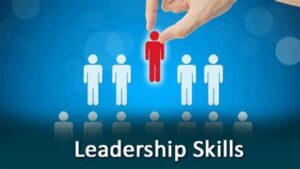 By Patrick Lencioni
By Patrick Lencioni
You’ve got to be able to talk to someone—but who? (Hint: It shouldn’t be the board.)
You’ve heard it before. “Leadership is lonely.” And while few people have great sympathy for executives who get paid good money for running an organization, loneliness is still loneliness, and it causes serious harm to leaders, the organizations they serve and the people in their lives.
What is the primary cause of this? For most, it comes down to having no real source of encouragement and appreciation for what they do. Yes, CEOs are often surrounded by assistants and subordinates who provide them with gratitude and praise. Good leaders know that this kind of attention is often shallow and insincere. But what about the attention that leaders get from customers, vendors, consultants, even the media? Praise from relative strangers does not reduce loneliness, and in many cases, actually exacerbates it. Ask most celebrities.
What CEOs want and need is specific and genuine appreciation—and correction—from people they care about and admire. Unfortunately, chief executives have no manager and are deprived of this. As bad as that may be, what may be worse is that so many resort to doing what that old country music song says: looking for love in all the wrong places.
One of those places is the boardroom. Too many CEOs I’ve known seek approval and appreciation from the board of directors (often, the chairman). This makes sense because after working for managers throughout their careers, the board seems like the next best thing to a boss—but the board is not a CEO’s boss.
Turning to the board for affirmation is like the head coach of a football team wanting the team owner to approve the plays he calls on the field. Any good team owner will be more interested in the results—winning games—than in the day-to-day decisions he makes to get there. And if the team doesn’t win, the owner will still fire the coach, regardless of whether he did things the way the owner might have wanted.
Boards exist to provide high-level guidance to CEOs and to prevent them from egregious errors. They are not meant to provide the kind of affirmation, coaching or approval that a manager does. That doesn’t take away from the fact that CEOs deserve support and need to find it somewhere. Just not there.
The next most likely place a CEO looks for appreciation is at home. This makes sense. A spouse might seem a healthy place for a leader to turn for the kind of informed approval a manager would normally provide. But even the most involved spouse can’t adequately understand the depth of a CEO’s accomplishments and challenges without being part of the day-to-day activities of work. At best, they can be a sounding board or a sympathetic ear.
Which leads to the worst thing that some leaders do when they lack appreciation at work and don’t get it from their spouse: They get involved in inappropriate intimate relationships with an employee. So many affairs take place, I’m convinced, because CEOs simply want to be valued and consoled by someone who understands what he or she is going through at work. The damage of these affairs, on organizations and families, is obvious.
There is only one place where chief executives can and should go to avoid the loneliness that is a big part of their job: their leadership team. Now, I am fully aware of the problems associated with looking for support from team members who are also subordinates. It can be dangerous for a CEO to seek affirmation from the very people he or she might one day have to fire. I get that. But it’s doable, with the proper mix of vulnerability, authority and maturity.
When CEOs build real, deep, vulnerability-based trust with team members and understand the different contexts of conversations they are having, they can get the support they need while maintaining the authority their role requires. And even if it presents occasional problems and challenges along the way, it’s a far better tightrope to walk than trying to earn the approval and consent of a board chair or a lone sympathetic employee.
Source: Chief Executive
 by Wanda T. Wallace
by Wanda T. Wallace




 By
By  by
by  By Patrick Lencioni
By Patrick Lencioni